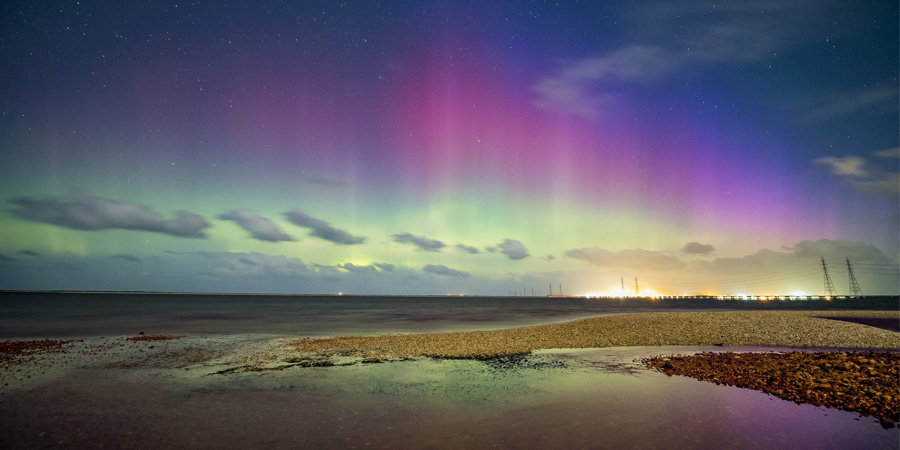Strong G3 geomagnetic storm
Tuesday, 14 May 2019 13:07 UTC

Strong G3 geomagnetic storm conditions were observed earlier today as a coronal mass ejection arrived at our planet.
While there was no shock in the solar wind, everything points to this being one of the many plasma clouds that the Sun expelled during the past few days. The solar wind speed maxed out at about 570km/s but a sustained southward pointing Bz component of the interplanetary magnetic field for about three hours around -14nT ruffled our planet's magnetic field and we quickly shot up to strong G3 geomagnetic storm conditions. A Kp-value of 7.
Strong G3 geomagnetic storm (Kp7)
— SpaceWeatherLive (@_SpaceWeather_) May 14, 2019
Threshold Reached: 08:59 UTC
Follow live on https://t.co/Zkq26B89Y7 pic.twitter.com/seGZSdm4w5
But which eruption was this? Well, space weather is really messy at the moment as there have been many eruptions on the Sun during the past couple of days. None of them were major eruptions that you'd see with M or X-class solar flares but still with the right magnetic field orientation you see that geomagnetic storm conditions are very much possible but strong G3 geomagnetic storm conditions were a big surprise even for the biggest optimists.
Is this coronal mass ejection the one that is expected to arrive tomorrow (launched on 11 May) or is this another eruption that we missed? It is near impossible to say what is what at the moment but we do know that more storm conditions due to coronal mass ejections passages remain possible at least during the next three days. There is at least one, perhaps there are even two plasma clouds that have a chance of impacting our planet still somewhere between us and the Sun. Exciting times!
Header image: Aurora Australis as seen from Awarua Bay, New Zealand by Tony Maheno.
Thank you for reading this article! Did you have any trouble with the technical terms used in this article? Our help section is the place to be where you can find in-depth articles, a FAQ and a list with common abbreviations. Still puzzled? Just post on our forum where we will help you the best we can!
Latest news
Latest forum messages
Support SpaceWeatherLive.com!
A lot of people come to SpaceWeatherLive to follow the Sun's activity or if there is aurora to be seen, but with more traffic comes higher server costs. Consider a donation if you enjoy SpaceWeatherLive so we can keep the website online!

Space weather facts
| Last X-flare | 2025/03/28 | X1.1 |
| Last M-flare | 2025/03/31 | M1.2 |
| Last geomagnetic storm | 2025/03/27 | Kp5 (G1) |
| Spotless days | |
|---|---|
| Last spotless day | 2022/06/08 |
| Monthly mean Sunspot Number | |
|---|---|
| February 2025 | 154.6 +17.6 |
| March 2025 | 127 -27.6 |
| Last 30 days | 127 -25.7 |


